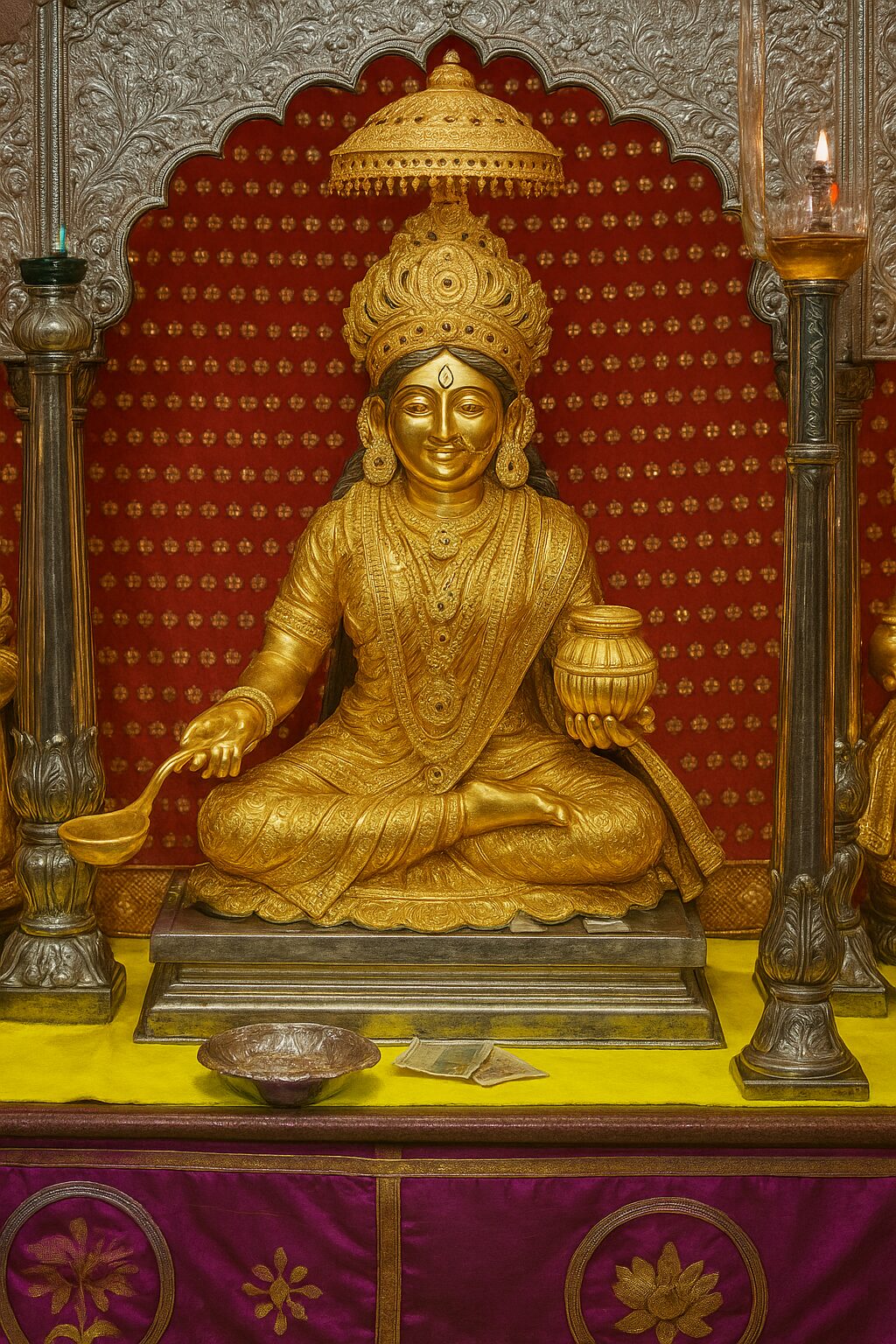The Shree Annapurna Mandir in Varanasi stands as a profound symbol of divine nourishment and spiritual fulfillment. Dedicated to Goddess Annapurna—an incarnation of Parvati and the embodiment of sustenance—the temple is a cornerstone of Varanasi’s rich religious tapestry.
Historical Significance
Constructed in 1729 AD by Maratha Peshwa Baji Rao I, the temple showcases the Nagara style of architecture, characterized by its towering spires and intricate carvings. The sanctum houses two idols of Goddess Annapurna: a brass icon available for daily worship and a golden idol unveiled only once a year during the Annakoot festival, celebrated a day after Diwali .
Mythological Roots
According to legend, Lord Shiva once declared that the material world, including food, was an illusion (maya). In response, Goddess Parvati vanished, causing all food on earth to disappear. As hunger spread, Shiva realized the importance of sustenance. Parvati reappeared as Annapurna, distributing food to all and emphasizing that spiritual enlightenment is unattainable without physical nourishment .
Architectural Highlights
-
Design: The temple features a large pillared sanctum adorned with intricate carvings, reflecting the craftsmanship of the 18th century.
-
Idols: The daily worship idol is made of brass, while the golden idol, depicting Annapurna seated with a ladle and bowl, is displayed only during the Annakoot festival.
-
Additional Deities: The temple complex also houses idols of Lakshmi and Bhudevi, symbolizing wealth and the earth, respectively .
Spiritual Practices and Services
-
Annadanam: True to the goddess’s essence, the temple offers free meals to devotees daily, embodying the principle that no one in Kashi should go hungry .
-
Festivals: The Annakoot festival is a major event, attracting thousands who come to witness the golden idol and receive blessed food and coins, believed to bring prosperity .
Timings:
-
Morning: 4:00 AM – 11:30 AM
-
Evening: 7:00 PM – 11:00 PM
-
Aarti: Conducted at 4:00 AM and 5:30 PM .


